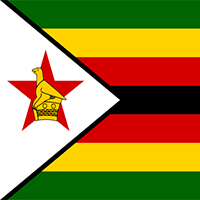The Government had to turn to a batch of 800 million $ 100 banknotes with the image of Eva Perón - who had been kept out of circulation since 2016, when the Macri administration decided to move forward with a new family of banknotes - to be in a position to attend the peak of payments that faced the last month end.
If he had not done so, he would not have been able to fulfill all his commitments, even with the Mint working piece-wise, as he has been doing since the quarantine began, to print new $ 1000 or, to a lesser extent, $ 500 bills.
The issue came to light due to the 25% increase in the circulation of $ 100 bills in the last month, going from 2,549.3 million units to 3,089.7 million units , at a time when the Casa de Moneda had stopped printing them to ensure the supply of banknotes, concentrating on the larger denominations, in order to be able to supply the Central Bank (BCRA) with the enormous amount it needed to assist the National Treasury in the emergency of the pandemic.
To compare, in the same month the circulation of $ 200 bills grew just 2.5% (ten times less), that of $ 500 bills, only 0.3%, and that of the orange $ 1000 bills, just over 8 %.
The complaints that the banks raised with the monetary entity for the circulation of said banknotes contributed to knowing the data , since it complicates and makes them more expensive to supply the ATMs, even more so in the face of a long weekend like the one that started today . “We want large bills so that ATMs can load more money, and generally the BCRA sends you a mix: lately, that mix included a lot of $ 100, which is a problem because ATMs take up too much space,” they explained to LA NATION in an important entity.
The 540.4 million units of $ 100 released to the market during June are part of a game that had been printed in 2015, but had never seen the street since the BCRA, a year later, had decided to gradually replace the banknotes that denomination that circulated until then (both those aged with the image of Roca, who have been on the street since before the beginning of the century, and those of Evita, launched about the end of 2012) for the taruca ticket, a native deer Northwest.
That explains that those who have withdrawn money from ATMs in recent days (especially if they did it from public banks or with many branches or large ATM networks), have come across brand-new and shiny $ 100 bills with the image of Evita and with aroma of ink.
The BCRA said that the provision of the ATMs is assured for the next few days, and in cash-flow transport companies they linked the surprise reappearance of these tickets on the scene with the operation to ensure that there is no shortage. “It is customary to reload ATMs in the days leading up to a long holiday with low-nomination paper money and save high-nomination ones for the holiday,” they said.
Since the emergence of the coronavirus in the country, due to the impact that the quarantine had on the economy and on tax collection, which had already been hit hard, the state’s income plummeted at a time when it needed to expand expenses the most.
Without its own savings or genuine sources of credit, the Government turned to the Central Bank, which turned on the “little machine” to full effect: for various reasons (loans or transfers of accounting profits but which must be monetized), it issued 1,145 billion pesos only in the last few years. months , money that the Treasury used to help companies pay wages or deposit thousands of Argentines with the Emergency Family Income (IFE), among other things.
It was not all physical money, but in an economy still very dependent on cash, most of it was covered by issuing new paper money and putting everything in reserve into circulation. The monetary circulation in the hands of the public now stands at $ 1,401,924 million, a figure that almost doubles the $ 792,771 million a year ago.
The growth of circulation, in recent months, was attended with a reinforced pace of printing in the two venues that the Casa de Moneda has had for a few years (the historic one, on Antarctica Argentina Avenue, in Retiro, and the new , where the expropriated Ciccone Calcográfica worked), which works 24 hours a day in three shifts to meet the sustained demand.
But the outbreak of the pandemic among its staff (there were four cases in Retiro and more than 30 among employees who go to the facilities located on the edge of the Panamericana) forced a standstill of the machines for a few days during the last month and led to in which he had to resort to the stock he had in his vaults. It could be said that this was the fulfillment of that prophecy of Peronist mythology: Evita returned and was millions.
Source: La Nacion
Get the latest Banknotes news and updates with our free iOS and Android app. Download Now!



